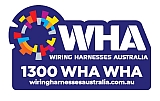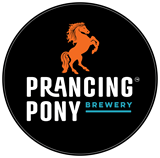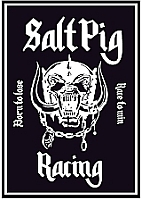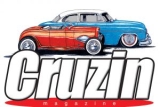Motorcycle Classes
7.D CLASSIFICATION of DISPLACEMENTS, FRAMES, ENGINES, and ENGINE TYPES
NOTE : This information is intended to be a guide only, please refer to the DLRA Rule Book for a more complete description.
Motorcycle classes are listed in order of frame type , engine type and displacement
7.D.1 Designated Frame Class
| P | Production |
| M | Modified |
| A | Special Construction |
| MPS | Modified Partial Streamlining |
| APS | Special Construction Partial Streamlining |
| SC | Sidecar |
| T | Trike |
| SCS | Sidecar Streamliner |
| S | Streamliner |
7.D.2 Designated Engine Class
7.D.3 Engine Displacement Class
Shown in cubic centimeters
50, 100, 125, 175, 250, 350, 500, 650, 750, 1000, 1350, 1650, 2000 and 3000 where permitted and 3001 and above where permitted.
| Engine Code | Engine Class |
Engine Displacement |
|---|---|---|
| 201 | 50cc | 50 cc engine |
| 202 | 100cc | 100 cc engine |
| 203 | 125cc | 125 cc engine |
| 204 | 175cc | 175 cc engine |
| 205 | 250cc | 250 cc engine |
| 206 | 350cc | 350 cc engine |
| 207 | 500cc | 500 cc engine |
| 208 | 650cc | 650 cc engine |
| 209 | 750cc | 750 cc engine |
| 210 | 1000cc | 1000 cc engine |
| 211 | 1350cc | 1350 cc engine |
| 212 | 1650cc | 1650 cc engine |
| 213 | 2000cc | 2000 cc engine |
| 214 | 3000cc | 3000 cc engine |
| 215 | UNLIMITED | 3001 cc and above engine |
| 216 | Ω (OMEGA) | Electric/Steam/Turbine |
Engine Classes are shown in cubic centimeters: 50, 100, 125, 175, 250, 350, 500, 650, 750, 1000, 1350, 1650, 2000 and 3000 where permitted and 3001 and above where permitted.
Displacement shall be greater than the maximum allowable for the next lower class. To permit minor reconditioning of worn cylinder blocks in classes other than Production, it is permitted to increase cylinder bore diameter .508 mm (.020 in.) beyond that which provides maximum displacement for the class only if the OEM bore diameter is within .508 mm (.020 in.) of the maximum class displacement. In all cases, the resulting displacement shall be exceeded to qualify for the next higher class. The .508 mm (.020 in.) will be discounted for record certification and will be noted on the certification card and in the logbook.
Vintage engines are allowed +1.27 mm (.050 in.) overbore, see section 7. J.10.
7.D.4 Frame Classes
| Frame Class | Engine Classes Available | Maximum Displacement | Engine Permitted |
|---|---|---|---|
| P | P, PP, PB, PPB, PV & Ω | 3000 | 1 |
| M | All except UG, UF, P, PP, PB, PPB & PV & Ω | 3000 | 1 |
| MPS | All except UG, UF, P, PP, PB, PPB & PV & Ω | 3000 | 1 |
| A | All except UG, UF, P, PP, PB, PPB, PV & Ω | 3001 & above | 4 |
| APS | All except UG & UF, P, PP, PB, PPB, PV & Ω | 3001 & above | 4 |
| S | All except P, PP, PB, PPB & PV & Ω | 3001 & above | 4 |
| SC | All except UG, UF, P, PP, PB, PPB, PV & Ω | 3001 & above | 2 |
| SCS | All except P, PP, PB, PPB PV & Ω | 3001 & above | 4 |
Classes defined and not restricted under items 7.D.1, 7.D.2, 7.D.3 and 7.D.4 are open for competition.
7.E Production
This class is limited to production, street-legal motorcycles of which 500 or more have been produced and which are available for sale to the general public through retail motorcycle dealers. Motorcycles in this class shall be equipped with full lighting equipment, frame, forks, wheels, brakes, gas, and oil tank (if OEM), fenders and seat. The motorcycle must appear identical in all respects to the production model it represents, including the intake air box and exhaust system, unless an item is added, removed, replaced, or modified as required, to comply with the safety requirements of this rule book, or is allowed by the Production frame class rules. The exhaust system, looking at the end (down its centerline) shall be unmodified, i.e., the exit diameter of the canister (muffler) cannot be enlarged. This comparison will be made when the bike is assembled as ready to run. Any performance modifications shall be out of view.
Custom painting or decal removal does not violate the production class appearance rule however smoothing, filling, removal of badges, emblems or garnish trim or other physical changes are not permitted. Production class records are subject to approval and will be certified ONLY after comparison with the manufacturer’s specifications for the model. The entrant is required to provide suitable documentation substantiating the production design of the entry at the time of the record certification inspection.
7.F Modified Production - M, MPS
The Modified Class is intended for “modified” production models and not purpose-built racing bikes.
This class includes all On Road, On-Off Road and Off Road only models and limited production models (more than 50).
These classes do not include factory produced road racing or any other specialized racing or models.
The requirements for this class include:
• An OEM frame must be used. Steering head angle may be altered but must remain in its original location. Swing arm length, type and mounting method may be altered. Brackets, braces, mounts, gussets, etc. may be moved, modified, or removed. Perimeter type frame engine cradle tubes must remain unmodified. Spar-style main frame spars must remain unmodified. “Main frame spars” are defined as the large formed tubes which connect the steering neck to the engine mounts and swing arm pivot.
• The engine shall be from the same manufacturer as the frame.
&bullA single engine with maximum displacement limited to 3000cc.
• A maximum wheelbase not to exceed the original OEM specification plus 10%. Entrants shall provide acceptable documentation for record certification.
• Handlebar grips and rider seating position shall be above the top of the rear tyres with the rider seated unless original OEM design.
• Gas tanks, if not original equipment to the production model, shall have a minimum capacity of 5 liters or 1.32 gallons.
• OEM lights, instruments, fenders, gas and oil tanks, seat, forks, swing arm, shocks, brakes, and wheels are optional.
Bikes that meet the requirements for the Modified Production Class by definition cannot run in the Special Construction Class.
7.F.11 Open Class - Modified Production
No streamlining is permitted in the open motorcycle class. Streamlining is defined as any devices or objects forward of the rider (see 7.A.7) that have the apparent effect of directing, limiting, or controlling airflow around the motorcycle or rider.
A front fender is optional, and if used shall comply with the following: the front wheel and tyre shall be visible from either side for a continuous 210 deg. of their circumference. The front of the fender shall not extend lower than 12.7 cm (5 in.) above a horizontal line drawn through the front axle. The perimeter of the fender shall not be farther than 4.445 cm (1.750 in.) from the tread. The sides of the fender may fair into the fork tubes but shall not be over 5.08 cm (2 in.) wider overall than these parts
- Seat or tail section shall conform to partial streamlining rules.
- Un-modified OEM air inlet scoops, OEM instruments, OEM instrument panels and/or OEM headlights mounted with un-modified OEM mounts in the OEM location are allowed in the Open class and therefore meet the non-streamlining rule.
Documentation to verify OEM parts shall be made available to the inspector by the competitor.
Motorcycles using non-OEM instruments, or OEM instruments not using OEM mounts, must be mounted within an area defined as no farther forward than 15.24 cm (6 in.) in front of the leading edge of the upper triple clamp nor more than 10.16 cm (4 in.) above the top of the upper triple clamp nor more than 5.08 cm (2 in.) below the top of the upper triple clamp nor wider than 2.54 cm (1 in.) outside of each fork tube.
7.F.12 Partial Streamlining – Modified Production - MPS:
All O.E.M body work, seat, tail section or fenders for the specific production model year is allowed but documentation to verify OEM parts or exact replicas of those components shall be made available to the inspector by the competitor.
The following rules apply to motorcycles using non-OEM components (or replicas of those components), or using a fairing, bodywork seat, tail section or fenders on a production model that was not originally equipped with those components.
No part of the fairing ahead of the front axle may be lower than the top of the front rim at the axle vertical centerline or be forward of the front edge of the rim. Front Fender see Section 7.F.4.1. There shall be no streamlining forward of the front edge of the front rim. There shall be no streamlining other than a seat, tail section or fender to the rear of the rider’s body, and the seat, tail section or fender may not cover any of the wheel when viewed from the side. If a streamlined seat, tail section or fender is used it cannot extend further to the rear than a vertical line at the rear edge of the rear tyre or be more than 91.44 cm (36 in.) from the ground with the rider seated on the bike. It shall be possible to see all of the rider completely from either side, except the hands and forearms. As viewed from directly above it shall be possible to see all of the rider in any and all riding positions, except the hands, forearms, legs and feet. It is forbidden to use any transparent material to avoid the application of these rules. Fairings or bodywork shall have a minimum of three (3) separate mounting points.
The OEM fairing, bodywork and tail section for the specific production model THAT EXCEEDS THE ABOVE are allowed. Fairing and tail section shall be mounted in a conventional manner and all bodywork pieces shall be mounted in their original relationship to each other. Replacement non-OEM fairings, bodywork and tail sections shall be an exact replica of the OEM parts. Documentation to verify conformation of non-OEM parts to OEM parts shall be made available to the inspector by the competitor.
7.G SPECIAL CONSTRUCTION – A, APS
The Special Construction class is intended for purpose-built race bikes, not production bikes with minor modifications. A special construction frame is unlimited in design, except for the class requirements of this section. This class includes factory produced road racing or any other racing “works” models.
Bikes in this class must have either a full APS fairing or comply with two of the following requirements:
- Two or more engines
- Engine displacement greater than 3001cc
- Seat base lower than top of rear tyre with the rider seated on the bike
- Design items not permitted in the Modified Production class
- Center hub steering unless OEM
All components shall have sufficient strength to ensure stability and safety. Weld integrity and fabrication methods will be closely scrutinized during the inspection process. The technical committee may require Non-Destructive Test Certification of components and/or stress analysis of the design.
A bike entered in the Special Construction Class cannot be entered as a Modified Production Class entry within the same racing season.
7.G.10 Open Class: – Special Construction – A
This class is limited to purpose built “bare bones” race bikes stripped of all aero and street use parts. No streamlining is permitted in the Open Special Construction class. Streamlining is defined as any devices or objects forward of the rider (see 7.A.7) that have the apparent effect of directing, limiting, or controlling airflow around the motorcycle or the rider. A front fender is optional, and if used shall comply with the following: the front wheel and tyre shall be visible from either side for a continuous 210 deg. of their circumference. The front of the fender shall not extend lower than 12.7 cm (5 in.) above a horizontal line drawn through the front axle. The perimeter of the fender shall not be farther than 4.445 cm (1.750 in.) from the tread. The sides of the fender may fair into the fork tubes or tyre but shall not be over 5.08 cm (2 in.) wider overall than these parts. If a seat, tail section or fender is used, it shall not extend more than 7.62 cm (3 in.) past the rear most edge of the rear tyre or cover any part of the wheel when viewed from the side. No part of the tail section shall be lower than the top of the rear rim, or over 91.44 cm (36 in.) from the ground, with the rider seated on the bike.
It shall be possible to see all of the rider from either side. As viewed directly from above, it shall be possible to see all of the rider, in any and all riding positions except for the legs and feet. It is forbidden to use any transparent material to avoid the application of these rules.
Number plates, if used, shall be located behind the rider, and ahead of and above the rear axle centerline.
7.G.11 Partial Streamlining: - SPECIAL CONSTRUCTION – APS
If a streamlined seat/tail section is used, it cannot extend further to the rear than 25.4 cm (10 in.) beyond the rear edge of the rear tyre. No part of the seat/tail section may be more than 101.6 cm (40 in.) above the ground with the rider seated. No part of the seat/tail section behind the rear axle may be closer than 10.16 cm (4 in.) from the ground with the rider seated.
It shall be possible to see all of the rider completely from either side, except the hands and forearms. As viewed from directly above it shall be possible to see all of the rider, in any and all riding positions, except the hands, forearms, legs and feet. It is forbidden to use any transparent material to avoid the application of these rules. Fairings or bodywork shall have a minimum of three (3) separate mounting points.
No part of the fairing ahead of the front axle may be lower than the top of the front rim at the axle vertical centerline or be forward of the front edge of the rim. There shall be no streamlining forward of the front edge of the front rim.
Front fender is optional, and if used shall comply with the following: front wheel and tyre shall be visible from either side for a continuous 180 deg. of their circumference. The front of the fender may not extend lower than a horizontal line drawn through the front axle. The perimeter of the fender may not be further than 4.445 cm (1.750 in.) from the tyre tread. The sides of the fender may fair in the fork tubes/sliders/tyre, but must not be over 5.08 cm (2 in.) wider overall than these parts.
For non-conventional designs not using fork tubes/sliders, fenders may be 5.08 cm (2 in.) wider on each side of the tyre.
7.H STREAMLINER – S
A Streamliner is a motorcycle designed so that it is not possible to see the complete rider in the normal riding position from either side or above. Wheelbase is unlimited and shall make a single track. Power shall be transmitted only through the wheels of the motorcycle.
Steering shall be done with the front wheel only.
The vehicle, unloaded, must be capable of being leaned at an angle of 20 deg. (minimum) from the vertical position without touching the ground, other than the tyres, without prior contest board approval.
All components shall have sufficient strength to ensure stability and safety. Weld integrity and fabrication methods will be closely scrutinized during the inspection process. The technical committee may require Non-Destructive Test Certification of components and/or stress analysis of the design. Prior to starting construction, it is strongly suggested that the constructor submit final design prints to the technical committee for evaluation of compliance with rules and safety considerations.
All Motorcycle Streamliners and Side Car Streamliners must have the same fire access doors as Cars. See Section 5.A.
7.I SIDECAR – SC, TRIKE T
A sidecar is a three-wheel vehicle leaving two tracks with only the rear wheels driving. The distance between the tracks left by the centrelines of the rear wheel and the sidecar wheel must be at least 800 mm and not more than 1350mm. If three tracks are made, the distance between the tracks of the rear wheel and the front wheel must not be more than 100 mm apart.
A TRIKE – T is a three wheeled vehicle leaving three-wheel tracks.
Support the DLRA
- Promote your business by advertizing in the DLRA Newsletter
- Sponsors Information










